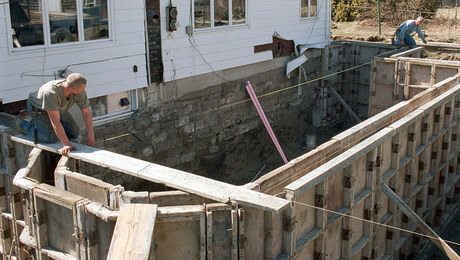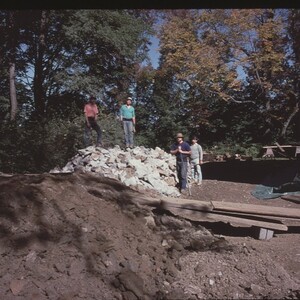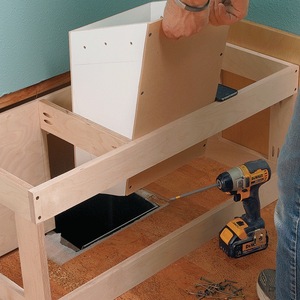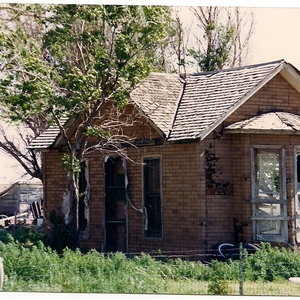Working on a kitchen remodel where we have to remove some knob and tube wiring in the ceiling. When we cut the black and white wires then restored power to determine which direction power was coming from, we were surprised to find 120V between the black and white on each side of the cut. Any ideas on what might be going on here?
BTW, the voltage was checked with a Wiggy, so it’s not phantom.
Discussion Forum
Discussion Forum
Up Next
Video Shorts
Featured Story

There are a number of ways to achieve a level foundation and mudsill.
Highlights
"I have learned so much thanks to the searchable articles on the FHB website. I can confidently say that I expect to be a life-long subscriber." - M.K.

















Replies
Sometimes the wires were made in a loop, fed from both ends. They still do it this way in England -- reduces voltage drop.
Line Dan says, a loop. Can't find the article number, but beleive NEC requires such circuits to be labeled now, know in the loop circuits in the plant I work in it is required.
Obviously the voltage is "same phase" or you would be blowing breakers. I would check to see if they are feed off the same breaker!
bake
A loop is possible. This is more likely to happen with K&T wiring as the hots and neutrals are not always run parallel and color coding can be vague.
Also possible is a shared neutral where a loose connection prevents the neutral from reaching ground state. This in conjunction with a ground fault on the hot would read as both the supply and load side being hot. Check this by turning off circuits and seeing which kills what conductors.
If either side of this circuit are still connected you could be reading through a motor winding making the neutral hot.
Also check for a faulty ground. A ground fault can make the ground hot throwing off readings. Often on K&T it is best to rig a known good ground reference. I rig a roll of #12 THHN to the ground bar and use this to check voltages.
It is really easy for neutral and hot conductors to get cross connected in K&T systems. Throw in a few loose, high resistance connections that don't allow or grounds, if present, to fall to zero potential and troubleshooting can become complicated.